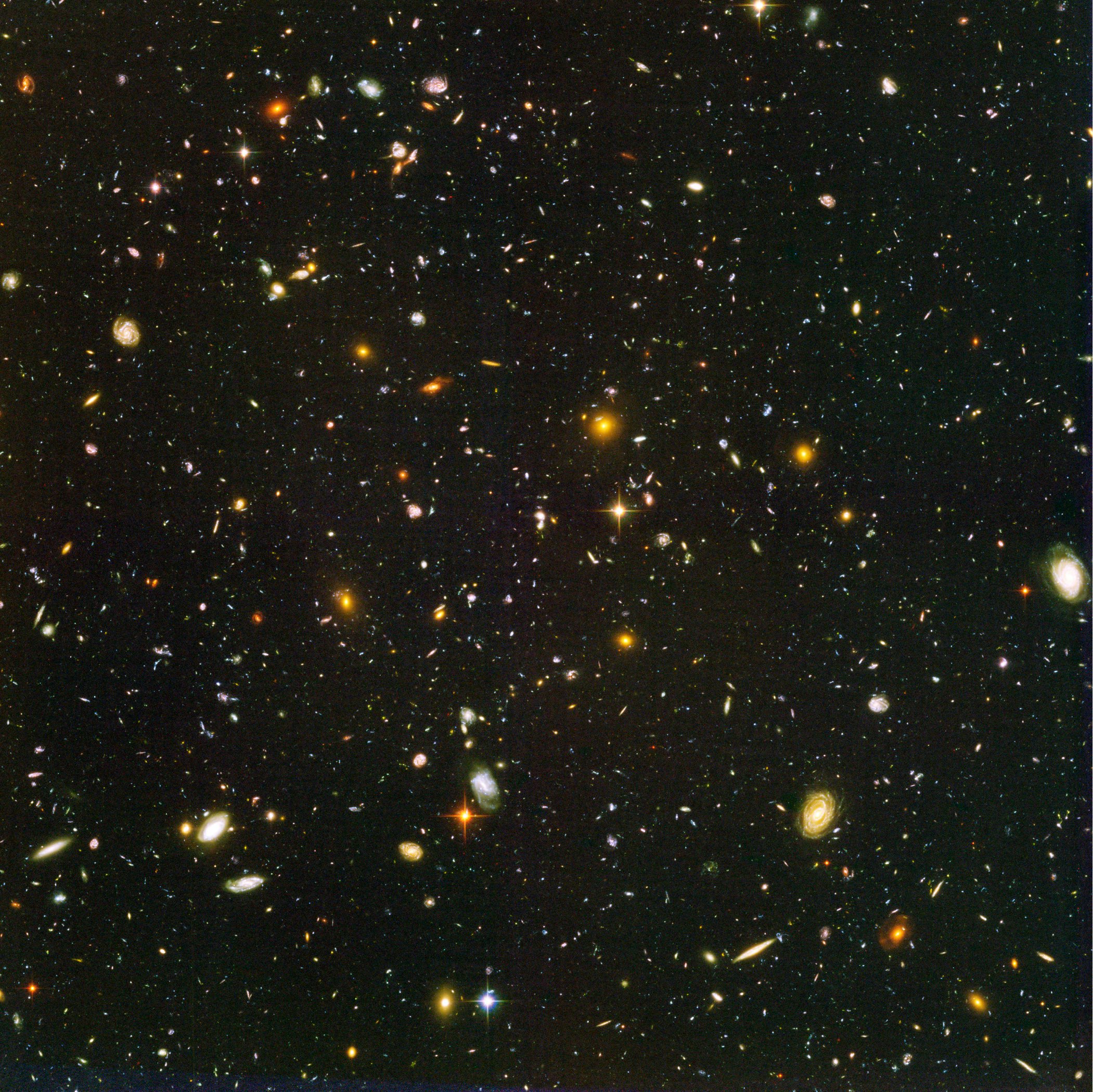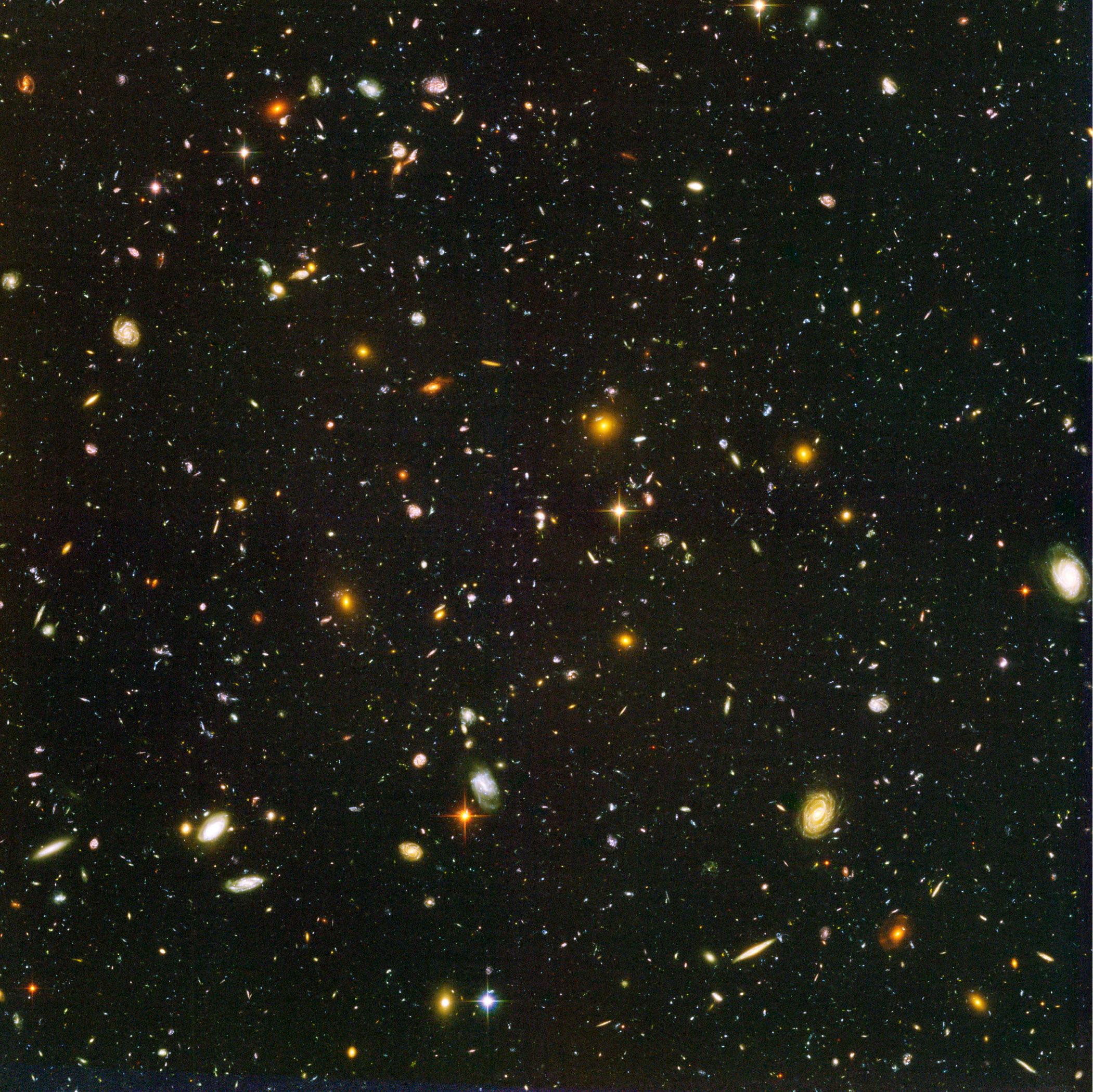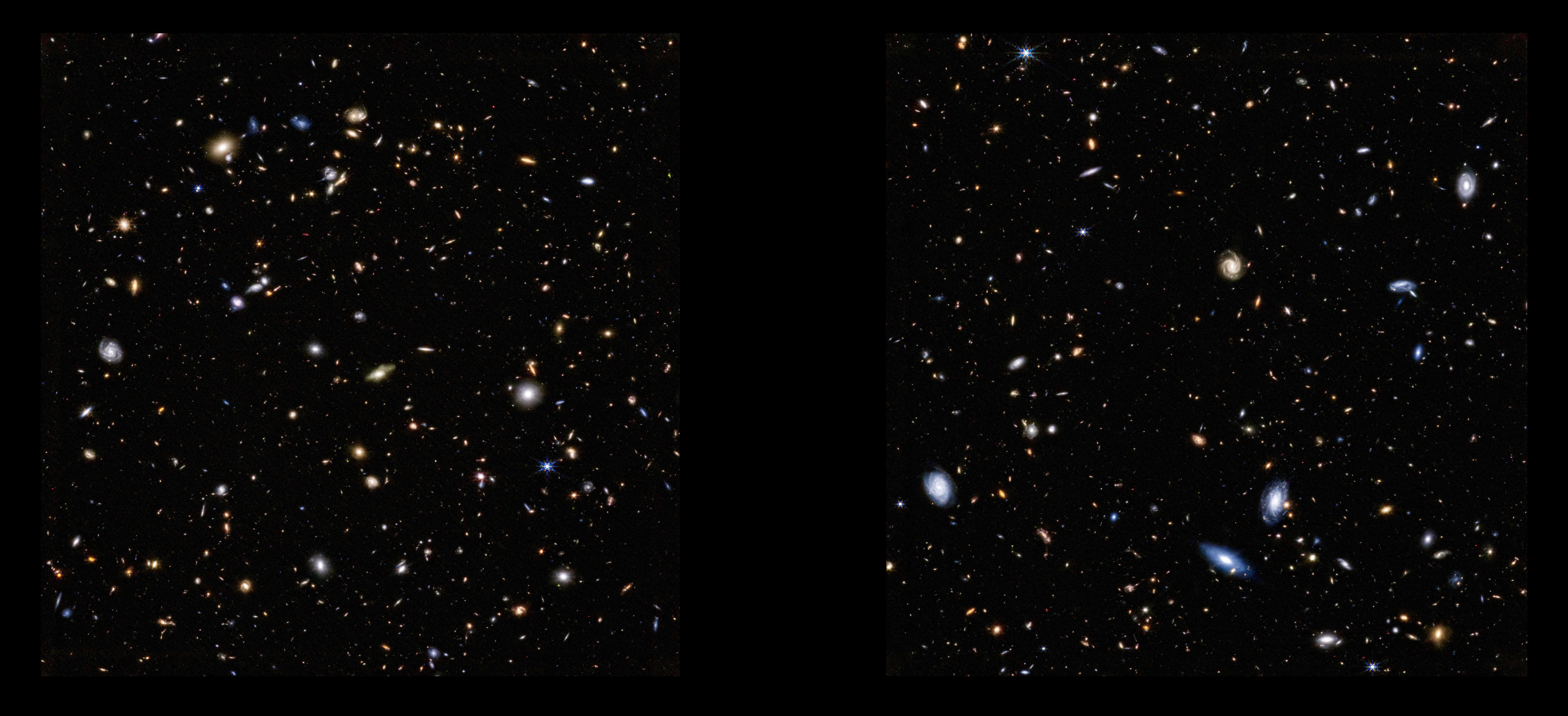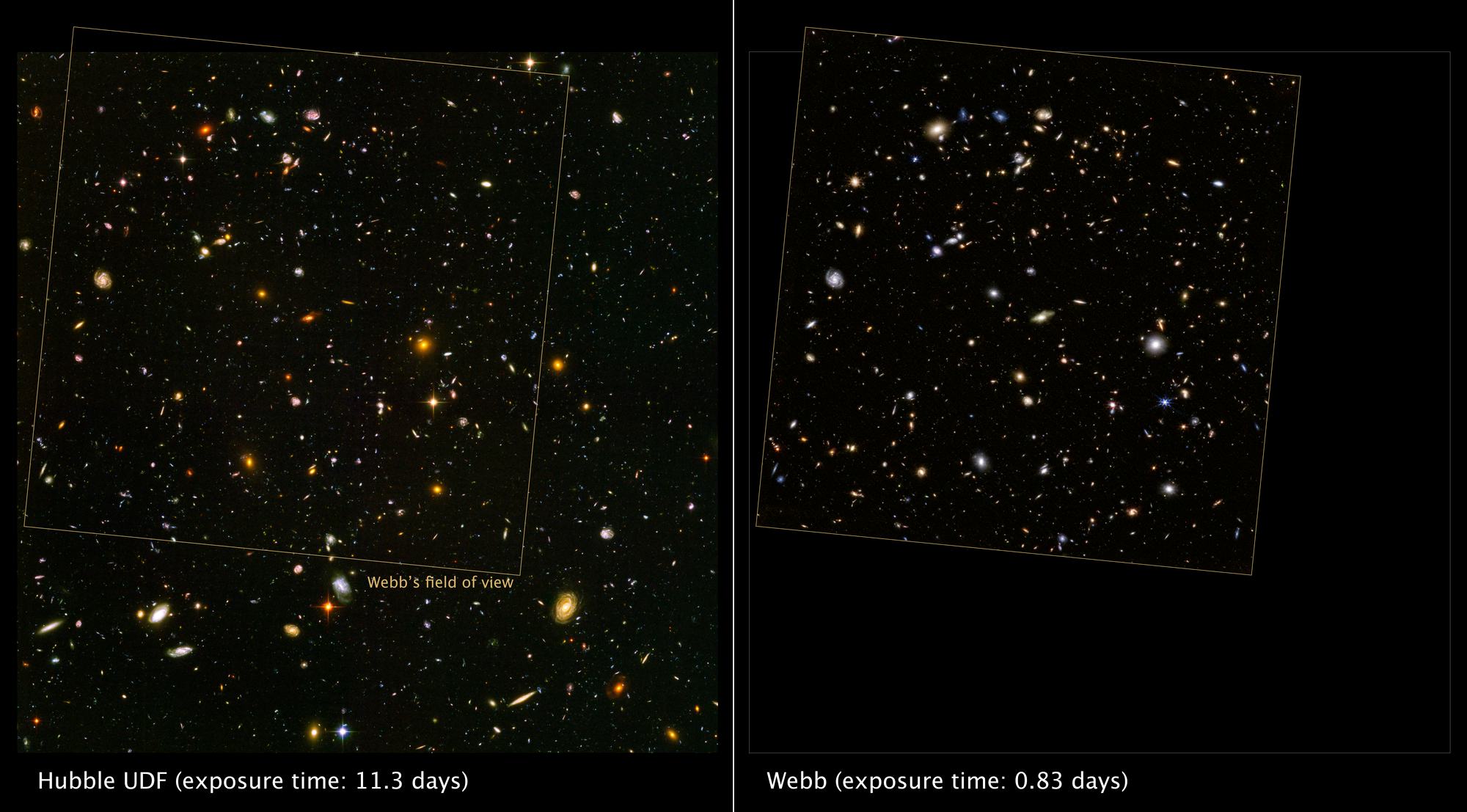
If you want to feel small, just look at the Hubble Ultra Deep Field.
About two decades ago, the Hubble Space Telescope captured 10,000 galaxies in a single snapshot, showcasing how places like our very own Milky Way appear as mere specks against the vast background of the universe.
Now, the James Webb Space Telescope is revisiting that same region of the sky with fresh eyes. Scientists used the telescope to gather even more detail about that slice of space and shed light on how some of the oldest stars and galaxies in the universe came to be.

A new image released today by the Space Telescope Science Institute gives us a peek into what the JWST has seen so far. Researchers from the US and UK got the first crack at exploring the Hubble Ultra Deep Field with JWST in October of last year during a general observer program.
“Our whole program was ~24 hours, which isn’t that much time in the grand scheme of how much time other observatories have looked at it,” said Michael Maseda, an assistant professor of astronomy at the University of Wisconsin-Madison, in a statement. “But, even in this relatively short amount of time, we’re starting to put together a new picture of how galaxies are growing at this really interesting point in the history of the Universe.”

To capture the new image, researchers used JWST’s Near Infrared Camera (NIRCam), which scanned part of the deep field with medium-band filters to amplify the faintest details of ancient objects. Seeing the universe in more vibrant color brought new features to light that hadn’t been recorded yet.
“The fact that we see hot, ionized gas is telling us exactly where stars are being born in these galaxies,” Maseda said. “Now we can separate those areas from where stars already existed.”
NIRCam viewed the deep field at similar wavelengths as Hubble, though there is a notable difference between the two captures. Some galaxies that were previously too faint to appear on camera popped up in the new observation, and objects overall appeared more vibrant.

And compared to the old Hubble snapshot, JWST was able to image its slice of the deep field lightning fast. Hubble needed 11 days to capture the area, while JWST needed less than a single day.
Speeding up the observation process is a boon for research into the early universe, where mysteries abound about how stars and galaxies came to be. JWST’s new view of the Hubble Ultra Deep Field is just the first of many to revisit the famous snapshot — and change our understanding of what’s out there.







